At first glance, the concrete piles lying off the coast of southeast Essex, near the town of Shoeburyness, looks like the exposed columns of an old pier, but in reality is a defensive structure erected across the mouth of river Thames to prevent ships from crossing into. At one time, this so called “boom” extended all the way to the other side of the water channel to Sheerness in the Isle of Sheppey.
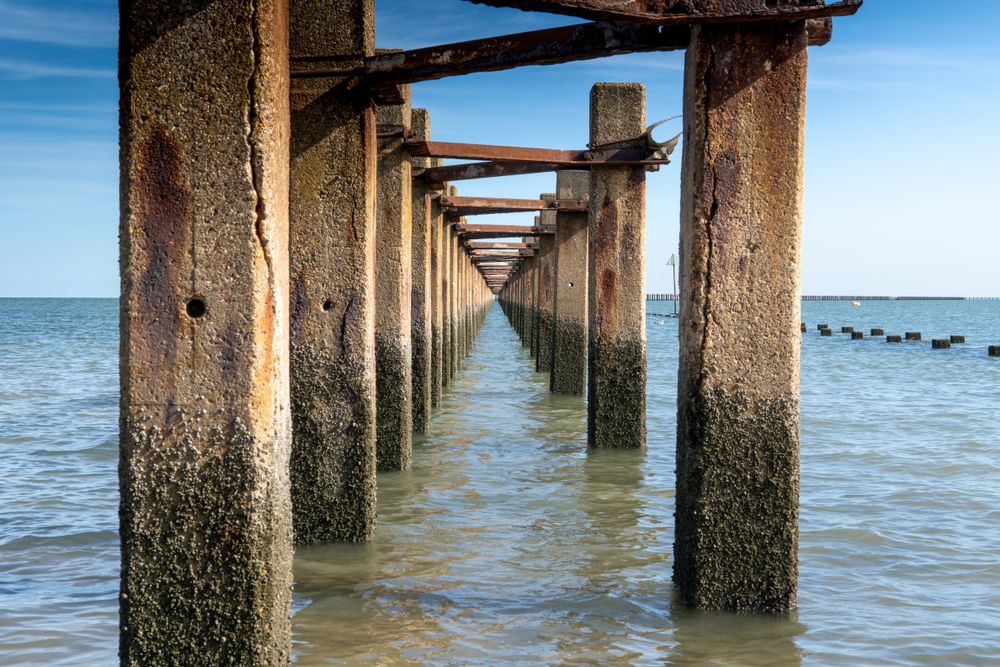
The Shoeburyness boom across Thames estuary. Photo: Andy119/Shutterstock.com
The Shoeburyness boom was originally built during the start of the Second World War to prevent German ships and submarines from striking Britain at its most vulnerable place—shipping. At any given time, the island nation had about 2,500 freighters sailing from around the world bringing in goods. The British also used ships for the movement of goods within the country, via the Thames and its numerous canals, as well as along the east coast of the island.
Germany was determined to cut off this vital lifeline. German destroyers relentlessly laid mines off the east coast and on the Thames estuary sinking more than one hundred ships within the first few months of the war. The situation began even more threatening when Germans began to drop bombs towards the end of 1939, bringing British commercial shipping to a virtual standstill.
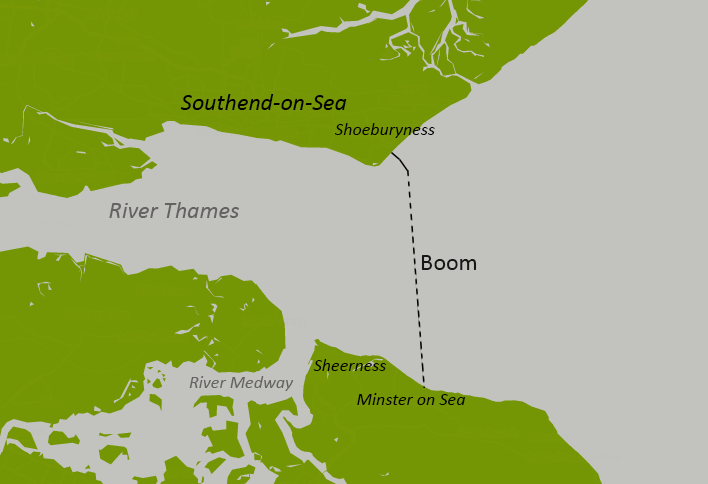
Although mine sweepers were constantly in operation, Britain realized that what it needed was a system of defensive forts along the coast to deter mine laying and shoot down enemy crafts. Eventually, they ended up building four Naval forts and four Army forts, not on the coast but on the water of the Thames and Mersey estuary. These armed towers, known as Maunsell Forts after Guy Maunsell, its designer, still stands.
To prevent enemy ships and submarines from entering the Thames estuary, a defensive barrier known as a boom was laid across the estuary from Shoeburyness in Essex to Sheerness in Kent, a distance of 9 kilometers. In the shallow water at either end, closest to the land, the boom was formed of wooden piles driven into the sandy seabed and reinforced with concrete. In the deeper sections of the water channel, the boom became an anti-submarine net consisting of timber floats joined together with heavy chains. The boom had two gates, one located on the Medway channel leading into Sheerness and the River Medway, and another on the Yantlet channel leading to the Thames and London. These gates were guarded by the Royal Navy’s vessels. Additional defense cover was provided by the nearby Maunsell Sea Forts and by a coastal battery at Shoeburyness. A second boom was placed across the Thames at Canvey Island and similar protections were installed at the Solent and at Plymouth.
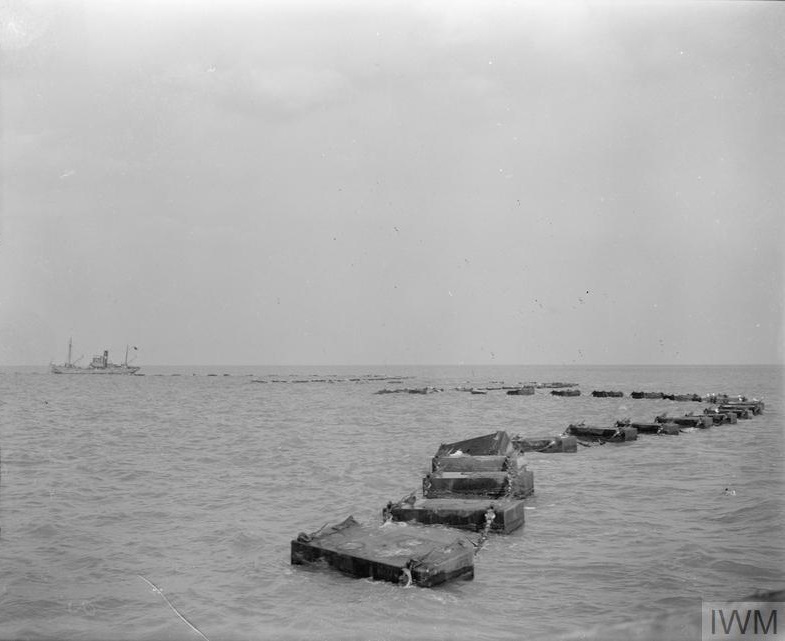
Submarine nets on the Thames estuary. Photo: Imperial War Museum

A Royal Navy vessel defends a gate on the Shoeburyness boom. Photo: Imperial War Museum
In the early 1950s, a new boom was constructed to the west of the old boom, this time to defend against the perceived threat from the Soviet Union. The boom comprised of two rows of concrete piles driven into the sand and linked by angle-iron straps. One began at Shoeburyness and continued for about 2.6 kilometers before changing to floats and submarine nets. Another began at Sheerness and likewise proceeded north until both ends of the boom met. However, by the time the boom finished construction it was already obsolete, because of its uselessness against nuclear-armed bombers and missiles.
In the 1960s the boom at the Kent side was completely dismantled while that on the side of Essex is largely intact, although it has been shortened by 600 meters to its current length of 2 km. The boom currently serves as a boundary to an artillery range operated by military, and access is not permitted to the beach beyond.
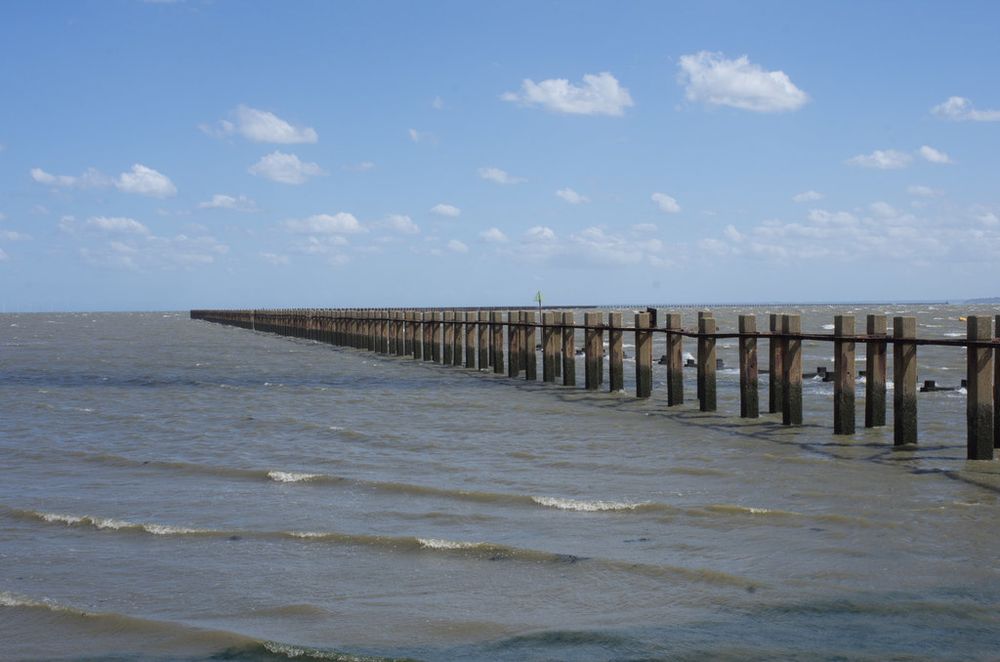
Photo: Julian Osley
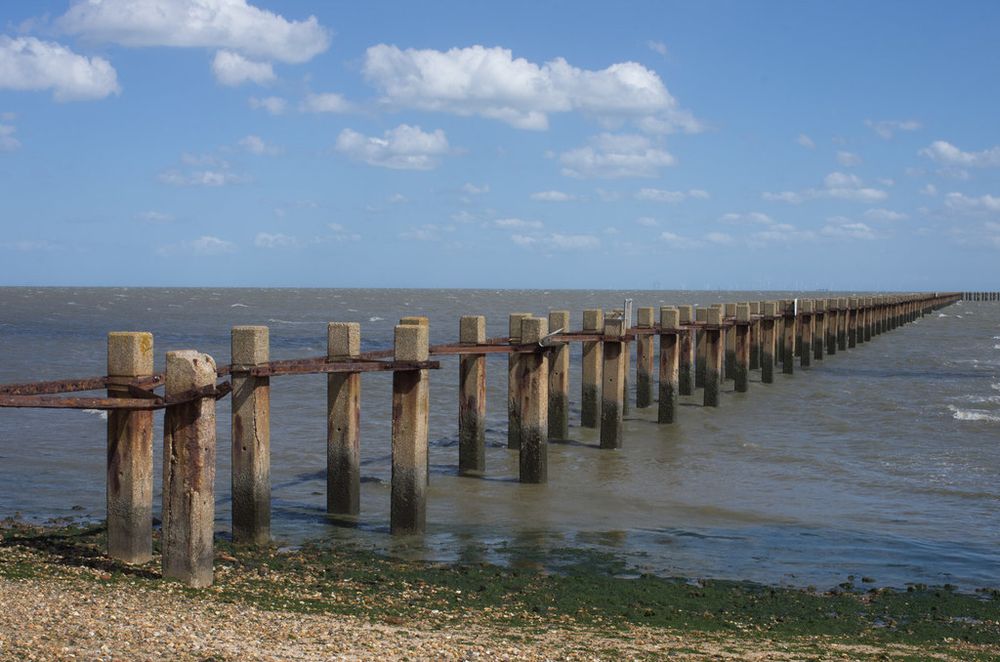
Photo: Julian Osley
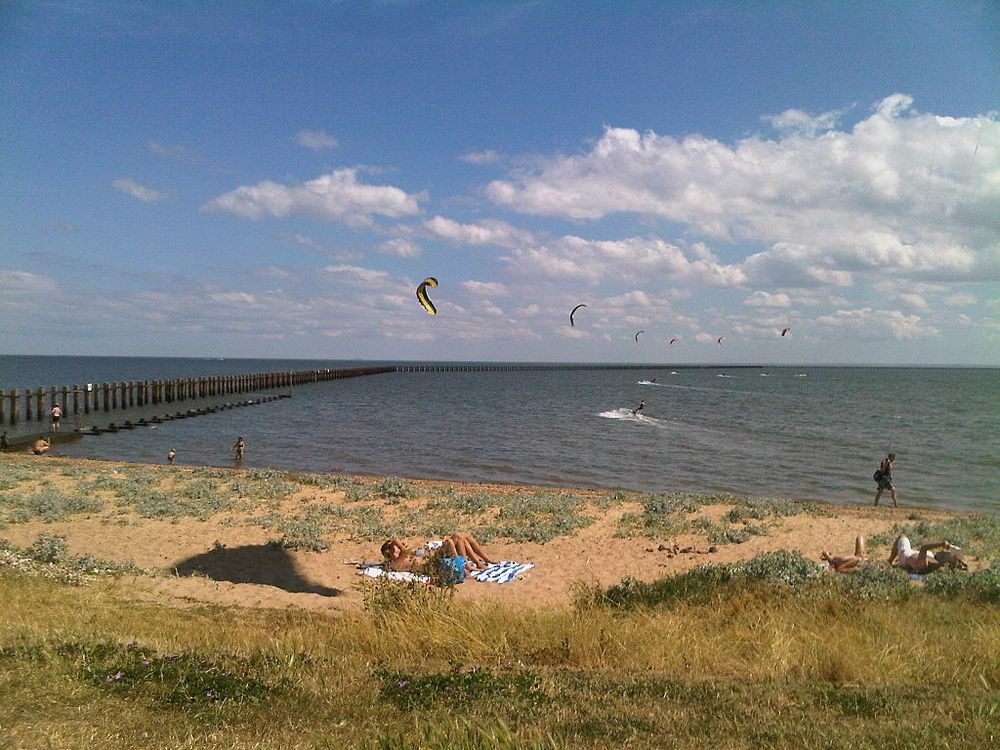
East Beach in Shoeburyness, Essex. Photo: Romazur/Wikimedia Commons



Comments
Post a Comment